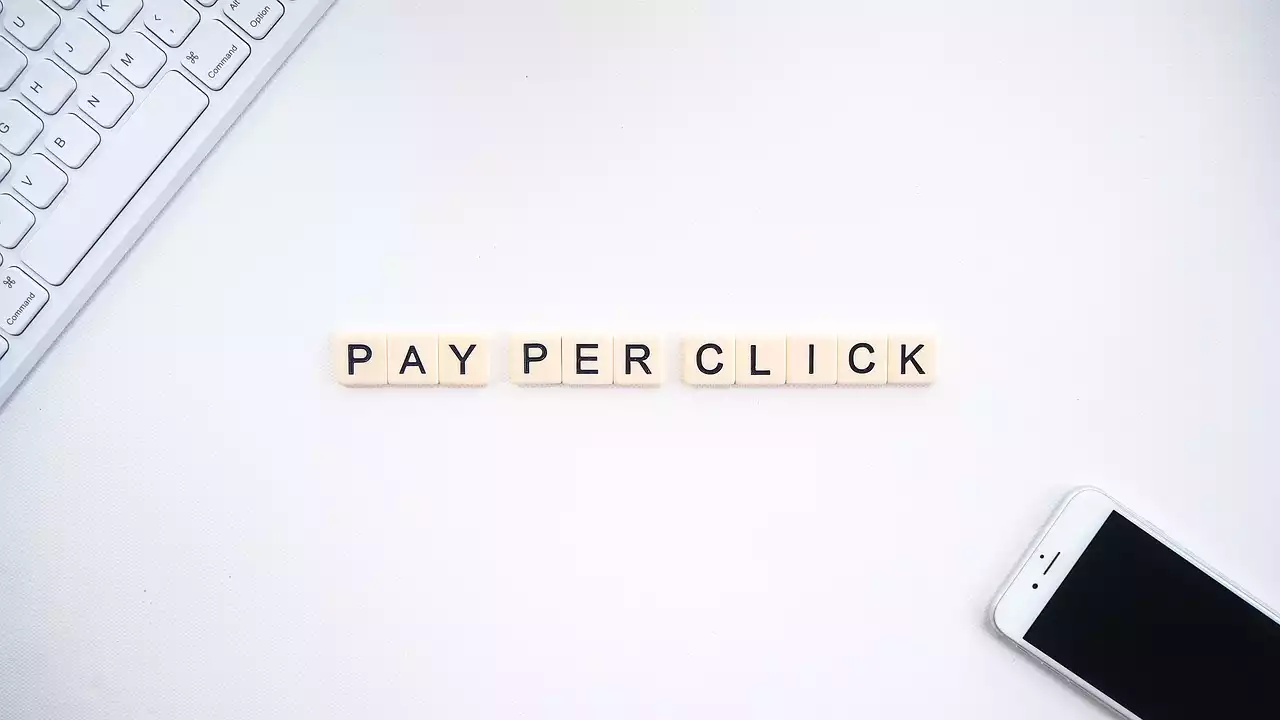What is PPC advertising?
PPC advertising, also known as paid search advertising, is a digital advertising model where advertisers pay every time their ads are clicked on by a potential customer. These ads can appear on search engines, social media platforms, or other websites. PPC advertising is a form of search engine marketing, where advertisers bid on relevant keywords and phrases to display their ads on search engine results pages (SERPs).
In PPC advertising, advertisers create ads and target specific keywords and phrases related to their business. Whenever a user searches for those keywords or phrases, the ad appears at the top or bottom of the search results page. The advertiser only pays when someone clicks on their ad, hence the term pay-per-click.
PPC advertising is a highly effective way to drive traffic to your website and increase conversions. By targeting specific keywords and phrases, you can ensure that your ads are displayed to users who are actively searching for products or services like yours.
Benefits of PPC advertising
PPC advertising offers several benefits to businesses of all sizes. Here are some of the most significant benefits of PPC advertising:
1. Targeted advertising
One of the most significant benefits of PPC advertising is the ability to target specific audiences. You can target users based on their location, device, language, and even their search history. This means that you can ensure that your ads are displayed to users who are most likely to be interested in your products or services.
2. Immediate results
Unlike other forms of digital marketing, such as SEO, PPC advertising can provide immediate results. As soon as you launch your PPC campaign, your ads will start appearing on search results pages. This means that you can start driving traffic to your website and generating leads or sales almost immediately.
3. Measurable results
PPC advertising provides measurable results, making it easy to track your return on investment (ROI). You can track the number of clicks, impressions, and conversions generated by your ads, as well as the cost per click (CPC) and the cost per conversion. This information can help you optimize your campaigns and make data-driven decisions.
4. Cost-effective
PPC advertising is a cost-effective way to promote your business. You only pay when someone clicks on your ad, which means that you're not wasting money on advertising to people who aren't interested in your products or services. Additionally, you can set a daily budget for your campaigns, ensuring that you don't overspend.
5. Brand exposure
PPC advertising can help increase your brand exposure and awareness. Even if users don't click on your ads, they'll see your brand name and logo, which can help build brand recognition and trust.
Types of PPC advertising
There are several types of PPC advertising, including search ads, display ads, social media ads, and remarketing ads. Let's take a closer look at each type:
1. Search ads
Search ads are the most common type of PPC advertising. These ads appear on search engine results pages (SERPs) when a user searches for a specific keyword or phrase. Search ads typically appear at the top or bottom of the page and are marked as ads.
Search ads are highly effective because they target users who are actively searching for products or services like yours. Additionally, you can target specific keywords and phrases, ensuring that your ads are displayed to users who are most likely to convert.
2. Display ads
Display ads are another type of PPC advertising. These ads appear on websites, blogs, and other online platforms. Display ads can include text, images, or videos and are designed to attract users' attention.
Display ads are highly effective for building brand awareness and exposure. Additionally, you can target specific websites or audiences based on their interests or demographics.
3. Social media ads
Social media ads are a type of PPC advertising that appears on social media platforms such as Facebook, Instagram, and Twitter. Social media ads can include text, images, or videos and are designed to appear in users' newsfeeds or timelines.
Social media ads are highly effective for building brand awareness and engagement. Additionally, you can target specific audiences based on their interests, demographics, or behaviors.
4. Remarketing ads
Remarketing ads are a type of PPC advertising that targets users who have previously visited your website. These ads appear on other websites or social media platforms and are designed to remind users of your brand or products.
Remarketing ads are highly effective for driving conversions and increasing ROI. By targeting users who have already shown interest in your products or services, you can increase the likelihood of them converting.
Understanding PPC advertising metrics
To effectively measure the success of your PPC advertising campaigns, it's essential to understand the key metrics involved. Here are some of the most important metrics to track:
1. Click-through rate (CTR)
Click-through rate (CTR) measures the number of clicks your ads receive per impression. A high CTR indicates that your ads are relevant and engaging to users.
2. Cost per click (CPC)
Cost per click (CPC) measures the average cost of each click on your ads. A low CPC indicates that you're getting a good return on investment (ROI) for your ad spend.
3. Conversion rate
Conversion rate measures the percentage of users who complete a desired action, such as making a purchase or filling out a form, after clicking on your ads. A high conversion rate indicates that your ads are effectively driving conversions.
4. Cost per conversion
Cost per conversion measures the average cost of each conversion. A low cost per conversion indicates that you're getting a good ROI for your ad spend.
5. Quality score
Quality score is a metric used by search engines to measure the relevance and effectiveness of your ads. A high quality score can lead to lower CPCs and higher ad rankings.
Creating your PPC advertising campaign
Now that you understand the basics of PPC advertising, it's time to create your first campaign. Here are the steps involved:
1. Set your goals
The first step in creating a successful PPC campaign is to set your goals. What do you want to achieve with your campaign? Do you want to drive more traffic to your website, increase conversions, or build brand awareness?
2. Choose your platform
Once you've set your goals, it's time to choose your platform. Which platform is best for your business? Will you use search ads, display ads, social media ads, or remarketing ads?
3. Conduct keyword research
Keyword research is a critical step in creating a successful PPC campaign. You need to identify the keywords and phrases that your target audience is searching for and create ads that are relevant to those keywords.
4. Write your ad copy
Your ad copy is the text that appears in your ads. It's essential to write compelling ad copy that is relevant to your target audience and showcases your unique selling proposition (USP).
5. Create your landing pages
Your landing pages are the pages on your website that users will land on after clicking on your ads. It's essential to create landing pages that are relevant to your ads and optimized for conversions.
6. Set your budget
Setting your budget is a critical step in creating a successful PPC campaign. You need to determine how much you're willing to spend on your campaigns and set a daily budget that aligns with your goals.
7. Launch your campaign
Once you've completed all the steps above, it's time to launch your campaign. Monitor your campaigns closely and make adjustments as needed to ensure that you're getting the best ROI for your ad spend.
Keyword research for PPC advertising
Keyword research is a critical component of PPC advertising. It's essential to identify the keywords and phrases that your target audience is searching for and create ads that are relevant to those keywords. Here are some tips for conducting effective keyword research:
1. Use keyword research tools
Keyword research tools, such as Google Keyword Planner or SEMrush, can help you identify relevant keywords and phrases for your campaigns. These tools provide insights into search volume, competition, and other key metrics that can help you optimize your campaigns.
2. Focus on long-tail keywords
Long-tail keywords are longer, more specific phrases that are less competitive than broad keywords. Focusing on long-tail keywords can help you target more specific audiences and improve your ad relevance.
3. Consider user intent
When conducting keyword research, it's essential to consider user intent. What are users looking for when they search for specific keywords or phrases? Understanding user intent can help you create more relevant ads and landing pages.
4. Monitor and adjust your keywords
Keyword research is an ongoing process. It's essential to monitor your keywords and adjust them as needed to ensure that you're targeting the most relevant and effective keywords for your campaigns.
Ad copywriting for PPC advertising
Ad copywriting is the process of creating compelling, relevant, and engaging ad copy for your PPC campaigns. Here are some tips for writing effective ad copy:
1. Use your unique selling proposition (USP)
Your unique selling proposition (USP) is what sets you apart from your competitors. Use your USP in your ad copy to showcase why users should choose your business over others.
2. Focus on benefits, not features
When writing ad copy, it's essential to focus on the benefits of your products or services, rather than the features. Users want to know how your products or services can benefit them, not just what they are.
3. Use clear and concise language
Your ad copy should be clear and concise, with no unnecessary words. Use simple language that is easy to understand and avoid jargon or technical terms.
4. Include a call-to-action (CTA)
Your ad copy should include a clear and compelling call-to-action (CTA) that encourages users to take the desired action, such as making a purchase or filling out a form.
Landing page optimization for PPC advertising
Your landing pages are the pages on your website that users will land on after clicking on your ads. It's essential to optimize your landing pages for conversions to ensure that users take the desired action. Here are some tips for landing page optimization:
1. Create relevant landing pages
Your landing pages should be relevant to your ads and the keywords and phrases you're targeting. Ensure that your landing pages provide users with the information they're looking for and are optimized for conversions.
2. Use clear and compelling headlines
Your landing page headline should be clear and compelling, with no ambiguity. Use your USP in your headline to capture users' attention and encourage them to stay on your page.
3. Use persuasive language
Your landing page copy should be persuasive and compelling, with a clear call-to-action (CTA) that encourages users to take the desired action.
4. Optimize your forms
If your landing page includes a form, ensure that it's optimized for conversions. Use clear and concise language, reduce the number of form fields, and include a clear and compelling CTA.
Setting up your PPC advertising budget
Setting up your PPC advertising budget is a critical component of creating a successful campaign. Here are some tips for setting up your budget:
1. Determine your goals
Before setting your budget, it's essential to determine your goals. What do you want to achieve with your campaign? Do you want to drive more traffic to your website, increase conversions, or build brand awareness?
2. Determine your maximum bid
Your maximum bid is the most you're willing to pay for each click on your ads. Determine your maximum bid based on your budget and the expected ROI of your campaigns.
3. Set your daily budget
Setting your daily budget is a critical step in ensuring that you don't overspend on your campaigns. Determine how much you're willing to spend each day and set your daily budget accordingly.
4. Monitor and adjust your budget
Your budget is not set in stone. It's essential to monitor your campaigns closely and adjust your budget as needed to ensure that you're getting the best ROI for your ad spend.
Tools for managing PPC advertising campaigns
Managing PPC advertising campaigns can be time-consuming and overwhelming. Here are some tools to help you manage your campaigns more effectively:
1. Google Ads
Google Ads is a powerful platform for managing PPC advertising campaigns. It provides a range of tools and features to help you optimize your campaigns and track your ROI.
2. SEMrush
SEMrush is a comprehensive digital marketing tool that includes a range of features for managing PPC advertising campaigns, including keyword research, ad copywriting, and campaign optimization.
3. AdEspresso
AdEspresso is a social media advertising management tool that includes features for managing PPC advertising campaigns on






.png?size=50)



